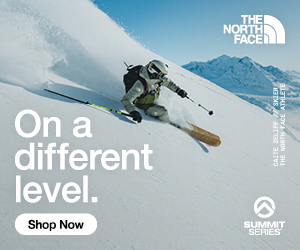Think your exercise routine works for skiing? Think again. Squats, lunches, planks and push ups won’t cut it. Ski fitness expert Guillaume Tual explains.
Each year, before the ski seasons start, I hear people talking about how many squats they can do, how far they can run or how long they can hold a plank for, supposedly to get ready to hit the slopes.
But like every sport-specific training, you need to train smart and as close as the sport’s conditions. Skiing and snowboarding involve constant change of terrain, joint stabilization, reactivity, muscle endurance, exponential gravity resistance and balance.
Whether you are a weekend warrior, a powder lover, a freestyler, a mogul bum or a speed freak, you still need the same requirements of load transfer, control of trunk rotation, proprioception, explosiveness and muscle endurance. If you want to ski longer and better, you need to train the right muscles so they can hold that G-Force load.
That’s why doing squats, lunges, crunches, push-ups, planks and other linear exercises are not enough to get you ski ready, or minimize much your risk of injury.
There are other exercises that WILL get you much more ski/snowboard ready and I can guarantee they will be more fun too.
It’s in the ankles, knees and hips
First, you need ankle-knee-hip flexion. If you can’t push your shins against the tongue of the boots, you’ll be “skiing on the back seat” putting too much pressure onto the knees risking serious injury on top of a big crash.
If you are anatomically limited in dorsiflexion, you may want to add a heel lift in your ski boots. Note: ladies who often wear high heels tend to have shorter/tighter calf muscles, which can create shin pain in ski boots.
How to do it: Wrap a thick rubber band around the ankle (below ankle bones) and attach it behind your foot. You should feel a lot of tension from the band. Keeping your heel on the ground, flex your ankle so you can feel the band pulling the joint back. Repeat 10-12 times so you can feel release and lightness in your feet.
The quads
Your quadriceps muscles play an important part in skiing and we have all experienced at one point or another that burning feeling in the thighs that make us want to stand up and stop on the side of the run. This is lactic acid rushing through your quads and staying there. A good way to start and train those muscles to raise the lactic threshold is to pump those legs.
Loaded Beast to Front Step:
Why it works: it is pretty much a horizontal deep squat followed by a long lunge. The loading/unloading movement takes your quads through their full range of motion in an explosive way.
Benefits: full body work, load transfer from upper to lower body, ankle/knee/hip mobility, hamstrings and hip flexors stretch, cardio work.
How to do it: Kneel on the floor on all four and sit on you heels. Push away with your arms extended in front of you, head between shoulders, looking back. Tuck your knees towards your abs so they are an inch off the floor. Push off forward from your feet.
Replace right hand with right foot and bring right arm beside your head (elbow pointing back), keeping your hips low. Feel the stretch in your right hamstrings and left hip flexors. Return to loaded position then explode forward to replace left hand with left foot. Do 3-4 sets of 12-20 on each side.
Pump it baby
Why it works: your quads are under constant tension and the slight lateral shift loads your glutes. You also get and increase in ankle and core control
Benefits: increase lactate threshold in legs, improve hips stability in the frontal plane, and connect feet to hips
How to do it: Assume a squat position with your feet parallel, hips width apart. Slightly shift from left to right, rolling your feet to their edges and keeping your knees parallel. Perform mini squats as if you were going over small rollers. Maintain a tall spine with shoulders upright. Feel the burn!
The slide
No two turns are the same and each run you do is different. Training your legs and core to ski longer is crucial if you want to have a good time on the slopes as well as avoiding injuries.
Why it works: it trains you to load one leg at a time and keep your centre of gravity over your ankle. Probably one of the closest exercises to actual skiing.
Benefits: reinforces muscle-brain communication, calf-hamstring-glute activation, increase balance.
How to do it: Stand up with feet hips width apart and with a slider (on carpet/astroturf) or a towel (on tile/timber floor) under the right foot. Lower yourself over the left leg into a single leg side squat while your right leg slides away to the side.
Keep your shoulders up, your right leg as straight as possible and your feet parallel to each other pointing in front of you. Drive your left heel into the ground to push your body back up. Repeat 10-12 times and swap leg.
Dynamic Skier Squat
Why it works: Similar to the Slider except that you need to engage your core and foot/ankle complex more to keep your balance. There is more eccentric load on the hips and favour explosiveness.
Benefits: increase foot to hip coordination, core and abdominals activation, balance, glute and quads strength.
How to do it: Stand up with feet hips width apart. Bring your left knee up and fall out to your left landing in a single leg squat. Push off straight away so you bring back your left knee up and across towards your right elbow. Hold for 2-3 seconds and fall back to your left to repeat 8-12 times before changing leg.
Bosu skater squat
Why it works: It’s challenging at different levels. You need to focus on your landing and foot placement and the more explosive you are, the harder it gets. There’s a lot of eccentric loading happening in the glutes and quads to avoid hip rotation. Great to stop that hip drop that creates the infamous “A-Frame”.
Benefits: ankle proprioception, balance, hip complex strengthening, cardio, and muscle endurance.
How to do it: Place a BOSU at about 45* angle against a wall, flat side facing you (make sure hard edges are touching the wall and floor). Step aside about 0.5-1m away and jump so your right foot hits the centre of the BOSU. Bounce back to the ground landing on your left leg only in a skating motion.
Be soft on the knee and ankle, allowing you to drop into a squat. Hold for 2-3 seconds before hopping back onto the BOSU. The more you push, the further you land and the more hip control is required.
Note: always focus on landing at the centre of the BOSU to avoid instability.
Hamstring Nordic Curl
So far you’ve done a lot of quads exercises so you need to balance it out. Quads are naturally bigger in size and strength so it’s very important to engage the hamstrings to make them work with the calves and glutes.
Why it works: Hamstrings are often neglected in ski training but are very important in stabilising the knees against the strong quads. A lot of knee injuries happen because of weak hamstrings. This exercise eccentrically loads the hamstrings (similar as when you double eject!) to strengthen them.
Benefits: hamstrings, core and back strength
How to do it: Kneel down and place your feet firmly against the wall. Stand upright with your hands in front of you. Fall forward as slow as possible and catch your self with your arms as you hit the floor. Push off with your hands and return to starting position. Repeat 8-10 times.
Read more: Animal moves to get you fit to ski
















































